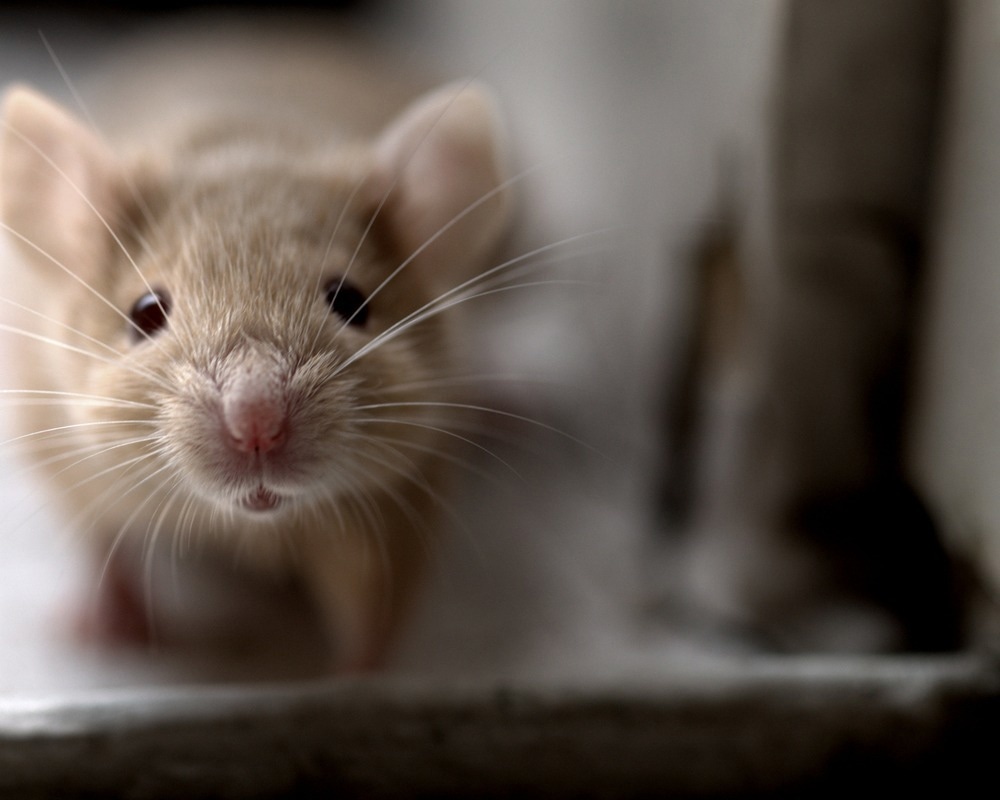Researchers from NYU Grossman School of Medicine delve into the intricate social behaviors and brain chemistry of mice, unraveling how traumatic experiences, particularly defeat, shape subsequent social interactions and avoidance behaviors.

Image Credit: vchal/Shutterstock.com
The hypothalamus, a region of the brain that regulates hunger, sleep, and hormone levels, has a unique area on its underside that may impact “retreating behavior,” according to research led by scientists at NYU Grossman School of Medicine.
Prior research by the team had revealed that this particular area, known as the anterior ventrolateral part of the ventromedial hypothalamus (aVMHvl), aids in rodent self-defense against bullying. Here, the authors also noted that the area plays a crucial role in promoting avoidance that lasts longer after defeat.
According to the study, when rival mice first encounter each other, the scent cues are insufficient to cause aVMHvl cells to fire, causing the mice to flee. But once a fight starts, pain - like being bitten - causes the “cuddle hormone,” oxytocin, to be released.
This signal binds to oxytocin receptors on aVMHvl cells and signals danger despite the fact that it has long been associated with attraction and parenting. According to the study’s authors, this process connects pain signals to the opponent's scent, making the bullied mouse more likely to flee the next time the aggressor comes around.
Our findings provide new insight into how oxytocin within the hypothalamus drives learning from traumatic social experiences. While the hormone is often associated with positive behaviors like caregiving, our study highlights its key role in social conflict.”
Dr. Takuya Osakada, Study Lead Author and Postdoctoral Fellow, Departments of Psychiatry and Neuroscience and Physiology, NYU Langone Health
The study team notes that while humans and mice have a lot of brain chemistry in common, they are not the same. However, they point out that prior research has shown that many species, including humans, exhibit similar “retreat” behavior after experiencing social defeat. In addition, past studies on children have linked the experience of being bullied to increased social isolation and school absences.
While earlier studies had looked at how rodents behaved over time following multiple defeats, according to Dr. Osakada, the new study - which was published in the journal Nature - is the first to investigate the quick social learning that takes place following a defeat.
The study team observed hundreds of mice for research purposes after exposing them to a rival for ten minutes before separating them. The animals’ brain activity was also recorded before and after a fight.
The findings demonstrated that social interaction decreased to only 20% of pre-loss levels 24 hours after a single fight. Furthermore, the results showed that the aVMHvl is directly adjacent to oxytocin-releasing brain cells, which were activated in response to pain.
The researchers blocked oxytocin binding to the receptors on these cells to investigate the function of the aVMHvl in social avoidance in more detail. The researchers discovered that in subsequent interactions, rodents with blocked oxytocin receptors were less likely to back away from their aggressor. However, even though the animals did not lose a fight, they remained to themselves when the researchers artificially activated aVMHvl cells.
Now that we have a better understanding of critical forces behind social avoidance, researchers can start exploring ways to harness oxytocin to treat disorders that affect social skills, such as autism, social anxiety, and attention deficit hyperactivity disorder.”
Dr. Dayu Lin, Ph.D., Study Senior Author and Professor, Departments of Psychiatry and Neuroscience and Physiology, New York University Langone Medical Center
Lin is also a member of the Neuroscience Institute. Nevertheless, Dr. Lin issues a warning: although the researchers linked the aVMHvl to social avoidance, the researchers did not discover a similar relationship with another behavior displayed by vanquished mice, namely, freezing in the face of conflict.
Therefore, according to researchers, more brain systems are probably involved in defeat behavior, and comprehending these systems is crucial before creating oxytocin-based treatments for social disorders in people.
Next, instead of using the artificial scenario from the first experiment, the research team intends to investigate whether the recently discovered aVMHvl mechanism may also play a role in behaviors that rodents use to establish the social hierarchy in more natural settings.
Source:
Journal reference:
Takuya Osakada, T., et al. (2024) A dedicated hypothalamic oxytocin circuit controls aversive social learning. Nature. doi.org/10.1038/s41586-023-06958-w